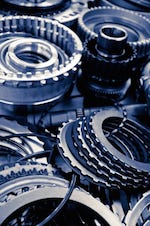Suppliers to automotive OEMs find strength in numbers
As some Tier 1 suppliers leave the automotive industry, others are hooking up to tighten the supply chain and make purchasing less stressful. In October, an IHS SupplierBusiness editorial noted that Continental AG (Hannover, Germany), a manufacturer of tires, brake systems among other parts for the transportation industry, and Schaeffler Technologies AG (Herzogenaurach, Germany), a maker of roller bearings, linear bearing systems and other engine and transmission components, added nine additional suppliers to their "burgeoning Premium Supplier Circle program."
December 16, 2015
As some Tier 1 suppliers leave the automotive industry, others are hooking up to tighten the supply chain and make purchasing less stressful. In October, an IHS SupplierBusiness editorial noted that Continental AG (Hannover, Germany), a manufacturer of tires, brake systems among other parts for the transportation industry, and Schaeffler Technologies AG (Herzogenaurach, Germany), a maker of roller bearings, linear bearing systems and other engine and transmission components, added nine additional suppliers to their "burgeoning Premium Supplier Circle program."
|
Image courtesy Ponsulak/ |
The nine suppliers included in the program are BASF, Etampa AG, Anton Haring, KAMAX Automotive, PennEngineering, Porite Taiwan, G.A. Roders, Scheuermann + Heilig and Schunk Sintermetalltechnik, according to SupplierBusiness. "Continental and Schaeffler have been cooperating in purchasing for six years now and have more than 1,200 strategic suppliers," said the IHS editorial. "The companies evaluated 110 suppliers on criteria that include a suitable product portfolio, quality aspect, logistics services and their global presence. Moreover, Continental and Schaeffler confirmed the status of 28 existing premium suppliers and are aiming to eventually enroll 200 suppliers in the scheme."
While it sounds like a great program, IHS points out that the demands on joint suppliers are also increasing."Schaeffler said that, as products become more complex and their development times shorter, the need to fulfill OEM requirements in a timely manner requires more attention," noted IHS. By implementing this program and "collaborating with premium suppliers, Continental and Schaeffler aim to develop products that meet customers' cost and quality parameters."
The joint purchasing program by the two Tier 1 German suppliers "is expected to reach $17.3 billion" in 2015, said IHS, "representing as much as half of total purchasing spend for the two companies."
Creating a program of this size (1,300 suppliers) means that the Tier 1s are adopting the same type of purchasing management strategies the major OEMs have put in place. "The system of preferred suppliers is another means of securing larger tier suppliers for the long term. Additionally, these preferred Tier 2 suppliers will get a larger share of Continental and Schaeffler's supply contracts, and "create a reliable, common supplier base."
IHS notes that the thinking behind this strategy is "that by locking suppliers into longer-term contracts and getting them involved in the vehicle design process earlier, they can expect suppliers to share more technology and better processes that help save money."
I've written several times about the automotive industry's desire to capture new technologies from its supply base, whether it's mold technologies to help improve part quality and reduce cycle times or processing that consolidates parts through two-shot molding and in-mold processes in rotating molds to reduce secondary operations. The OEMs also want their suppliers to become more financially stable, take on more risk during recalls and invest in more capacity to ensure they can keep up with increasing vehicle numbers. That's difficult for smaller suppliers to accept.
OEMs are also looking to mitigate supply chain risk, and part of that is relegating Tier 2 suppliers to Tier 1 oversight. That takes some of the pressure off OEMs in managing an increasingly complex and lengthy supply chain. Additionally, the Tier 1s will be a much larger entity with a group of larger, more financially strong suppliers that will ultimately put the Tier 1s on an equal footing—leveling the playing field—with OEMs and make them better able to negotiate pricing and withstand the pressure OEMs put on suppliers—pressure that smaller Tier 2 suppliers have a difficult time withstanding.
The landscape continues to change in the automotive industry, which means that molders and moldmakers will have to alter, or create, strategies that may or may not include this market segment.
About the Author(s)
You May Also Like





